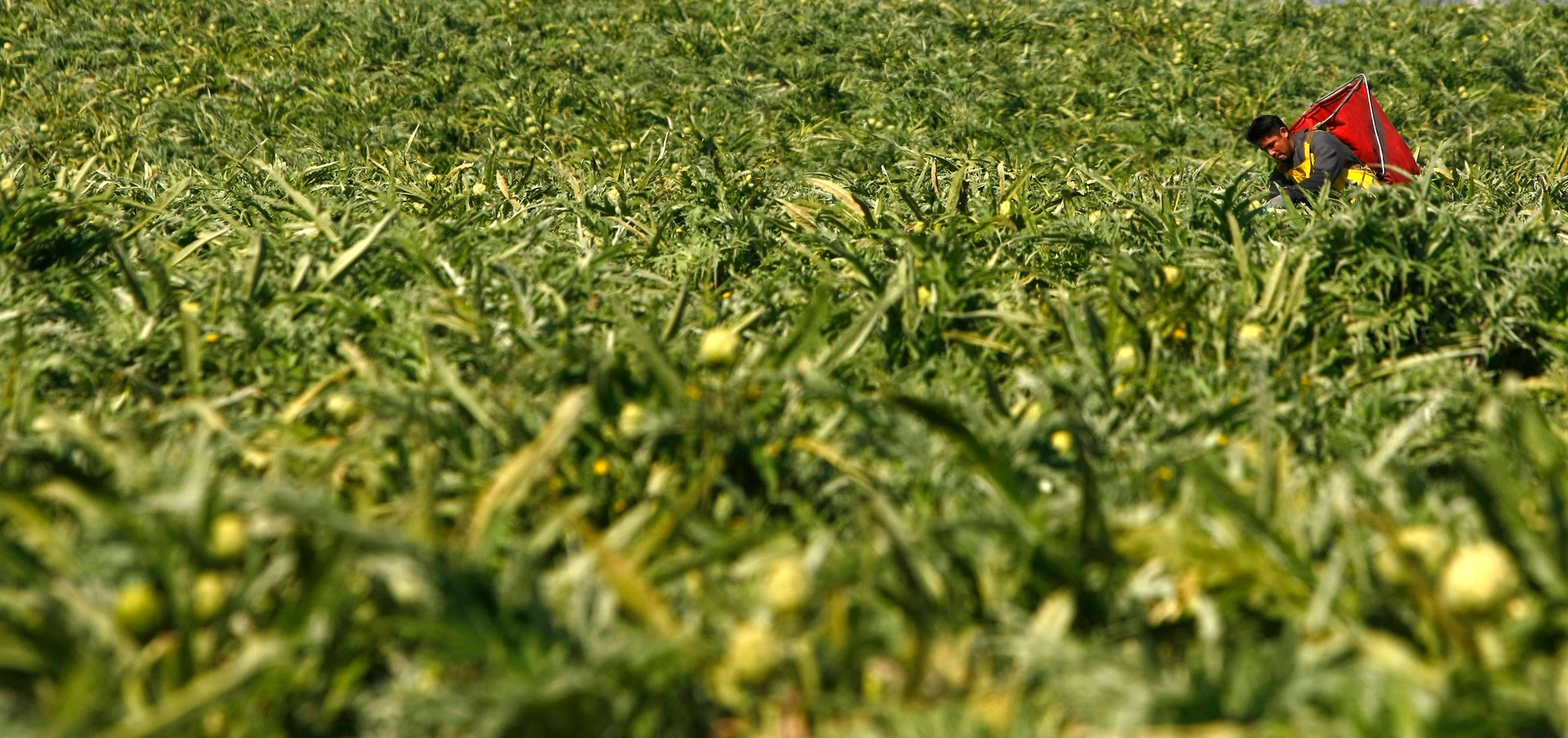A food truck is delivering donated produce to California farm workers
On an April afternoon in California’s lush Salinas Valley, a group of crop-pickers watched as a small, refrigerated truck approached their field. The truck parked, and out hopped six people. The workers looked on in shock as the team of mystery benefactors handed them bag after bag of fresh, chilled produce—strawberries, broccoli, lettuce—free of charge.


On an April afternoon in California’s lush Salinas Valley, a group of crop-pickers watched as a small, refrigerated truck approached their field. The truck parked, and out hopped six people. The workers looked on in shock as the team of mystery benefactors handed them bag after bag of fresh, chilled produce—strawberries, broccoli, lettuce—free of charge.
“The first one was a tearjerker on both sides,” says Melissa Kendrick, executive director of the Food Bank for Monterey County, which operates the truck.
Typically organized through churches, grocery stores, and soup kitchens, food donations have a long history of backstopping those of limited financial means. In Monterey county, located just south of San Francisco, one study found that 83% of food pantries, 69% of soup kitchens, and 90% of homeless shelters were serving more people in 2010 than four years earlier.
At the Food Bank for Monterey County, 67% of clients are Hispanic and 42% of the households served have at least one employed adult. Founded 25 years ago, the food bank currently serves about 88,700 people a year, roughly one-fifth of the county’s population.
“On the coast we have some of the most expensive real estate in the country,” says Kendrick. “It’s like the Beverly Hills of the [agricultural] community, yet the food bank feeds 25% of all children in Monterey County. Who would think that could happen here?”
The food bank decided to launch a food truck last year, after noticing that farm workers were (perhaps ironically) struggling to find and buy produce. Farm workers tend to be low-income and live in remote regions with few transportation options. In Monterey county, where one in three hospitalization is related to Type II diabetes, farm workers are also disproportionately likely to develop poverty-related illnesses like diabetes and hypertension.
The truck, known as the Mobile Farm Workers Produce Pantry, officially launched in April after a pilot program run. Since the launch, the food bank has received more than 200,000 pounds of donated food, and the number of food donors—primarily produce growers—has grown to 50, from just a handful at the start. To date, the food bank says its truck has helped some 4,000 farm workers.
“We’re using everything that’s being grown in this community to the fullest extent, and ensuring that nothing goes to waste,” Kendrick says. “It’s a perfect ecosystem, and we’re leveraging the ecosystem.”
While there have long been tax benefits to food donation—both corporations and people can write off such charitable contributions—companies in California just got another major incentive. According to a state law that went into effect in January, businesses that generate eight or more cubic yards of organic waste per week (about the size of a dumpster) must have organic waste recycling services.
The law is aimed at reducing greenhouse gas emissions from landfills. In California alone—the US’s largest agricultural producer and exporter—25% of all state landfill waste is food or agricultural, according to research from the University of California, Davis.
California’s mandate is also a backlash against Americans’ penchant for blemish-free fruits and vegetables. Government data suggests around 60 million tons of produce, worth about $160 billion, is currently wasted, primarily because imperfect products are often tossed by distributors or consumers.
The Salinas Valley, nicknamed the “salad bowl,” has a history of food innovation—roughly 70% of America’s lettuce is grown there and both iceberg lettuce and bagged salad mixes trace their origins to the region. More recently, the greater San Francisco area has taken to recycling organic waste as compost and some scientists are even creating anaerobic digesters that transform this waste into renewable energy.
The Food Bank for Monterey County hopes its refrigerated truck is the first of many—Kendrick pictures a fleet of vehicles making deliveries to people whose wages prohibit them from buying the very produce they spend hours picking. But the scalability of their plan depends on food producers continuing to increase their donations.
“Many food businesses are establishing new relationships with soup kitchens, emergency food pantries, and shelters, who can ensure that consumable food doesn’t go to waste,” says Sue Sigler, executive director of the California Association of Food Banks. “California is leading the way in addressing climate change, and this creates a significant opportunity to impact hunger.”